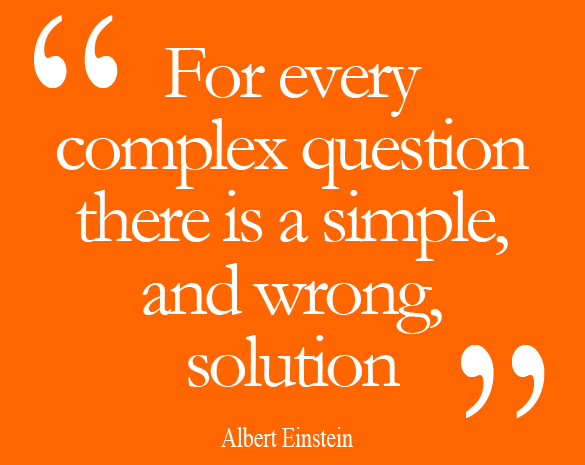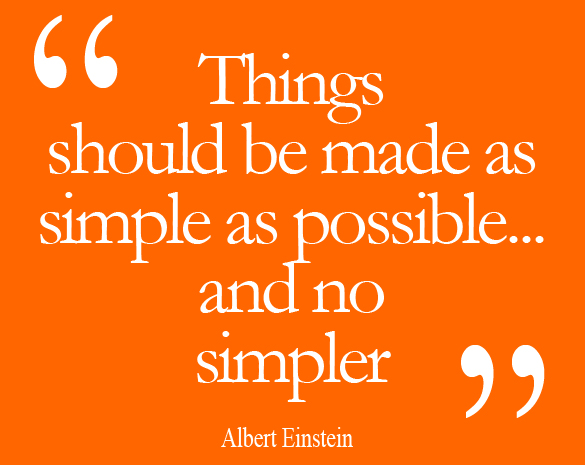We want answers!
We want accurate forecasts; we want to know the specific, measurable, actions that will give us the outcomes we desire; we want opportunities without the risk; we want certainty, whatever the circumstances; we want to be ‘in control’.
Well intended, maybe, but this desire for ‘certainty’ and ‘control’ – and the way we frame the accompanying questions – particularly in the domains of planning, strategy and innovation, can lead to unintended consequences and unconstructive behaviours.
All too often we jump to solutions. When the problem is simple, cause and effect are direct and ‘obvious’, this is the most expedient route and leads to ‘efficiency’ of the decision-making process. But when the problem, or opportunity, is more complicated or complex, jumping to solutions usually translates to ‘jumping to conclusions’; conclusions based on limited perspectives, unchallenged assumptions, unseen cognitive biases, personal agendas and opinions.
As you’re reading this, you may be thinking, “Yeah, ‘they’ do that”; but if you’re involved in the decision-making process this is likely to include you too, which is harder to accept and own-up to; but it’s natural. Firstly, to a degree, we’re wired this way, the human brain is programmed to see patterns, think about the response, and then act. To cut down the amount of ‘processing’ we need to do we develop automatic responses and short-cuts that jump us straight from ‘see’ to ‘act’. Secondly, in an organisational setting, we’re driven to needing to ‘know the answers’, be ‘in control’, with both the implicit expectation this sets and the extrinsic measures and incentives that accompany this, perpetuating the ‘see-act’ short-cut and sometimes blinding us to the fundamental questions we should be asking. This manifests itself in many, many ways, for example:
- Measures of ‘forecast accuracy’ that emphasise the mathematical calculation and ‘getting the number right’, rather than asking the questions that lead to an understanding of the factors and assumptions that affect the number
- ‘Innovation’ projects that lead with the ‘solution’ and short-circuit the crucial open questions and exploration that will open-up insights, jumping instead to execution in the misplaced hope that we’ll ‘project manage’ our way to breakthroughs
- ‘Strategic’ analysis that sets-out to find or manipulate the data to come-up with the answer we think people want to hear (how many times have you seen a ‘Boston Grid’ analysis honestly assess the current core business as a ‘Dog’?), rather than creating the dialogue and probing questions that open-up strategic opportunities and choices
- New product or investment proposals that always seem to just hit the ‘ROI’ objectives that constitute the ‘hurdle rates’, or Marketing Investment Plans that know what the answer needs to be before we ask the questions about the unseen market opportunities
- Operational forecasts that miraculously seem to result in ‘year-to-date’ plus ‘year-to-go’ equaling the original forecast or budget number
Many of the decisions faced in planning, strategy and innovation are, by their nature, complex (and of course, ‘forecasting’ is the technical word for ‘guessing’). In this arena there are no absolute connections between intentions, actions and outcomes; there is more than one ‘right’ answer; our knowledge of the whole ‘ecosystem’ surrounding the decision is, by necessity, piecemeal and imperfect. Addressing these decisions based on a limiting and simplistic thought process is dangerous.
With the laws of Change, Perspective and Entropy working on us, any decisions that require us to predict the future cannot, even in principle let alone practice, be completely definable. In many cases, the problem is not a failure to anticipate the right answers, but a failure to ask the right questions.
The way we frame the ‘question’ – the problem, the opportunity, the idea to be explored – determines how many opportunities and potential paths we open-up. Closing the question too much too soon limits our choices and pre-determines the outcome. This in turn creates the cognitive biases that make us look only for supporting evidence for that predetermined answer, rather than asking different questions to raise different possible solutions.
As with all biases, forewarned is forearmed. However, our cognitive biases will not disappear just because we make people more explicitly aware of them; addressing these is not easy and often requires work across a range of ‘hard’ and ‘soft’ capabilities. While we must learn to pose the right questions at an individual level, we can get real leverage, develop collaboration, and harness the richness of experiences and cognitive diversity through establishing strategic dialogue and developing our joined-up decision-making processes. Used properly, these processes create a forum for positive confrontation of opinions and challenging of implicit and deeply held assumptions. Posing questions, as opposing jumping to solutions, requires an atmosphere where uncertainty is excepted, doubt is OK, different perspectives are sought, and disagreement and dissent are encouraged. In most organisations, the mindset, processes, and particularly the meeting settings we create, achieve exactly the opposite of these.
The decisions we face across short, medium and long-term horizons – and of executional, operational, tactical and strategic nature – will naturally span a spectrum from ‘simple’ to ‘complex’. While we should develop the most ‘efficient’ and ‘automatic’ responses in simple situations, it is worth ensuring we understand the underlying questions as we move along the spectrum towards the complex end.
We live in a complex, interconnected, fast changing world and when it comes to the fundamental decisions we face against this backdrop, by definition our understanding will be incomplete and imperfect. But by asking the right questions we can embrace the inherent uncertainties and see opportunities that others don’t.
What questions do you need to ask?



Comments (4)
Comments are closed.